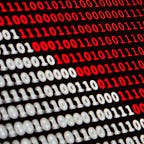Social distancing has become a near-universal intervention to mitigate the spread of COVID-19. Social distancing measures implemented by various states and municipalities include school and business closures, and prohibiting crowds from gathering. However, the limit on crowds size has varied, ranging from 250 to 2. Does a safe crowd size exist for limiting the spread of the disease?
We begin to answer this question using two real-world social networks, Brightkite and Gowalla. These dataset report locations of about 150K people with a high degree of time and location granularity. If two people report they are in the same place within a few minutes of each other1, we can reasonably assume they have been in close proximity. If either is infected, then the other would be exposed and potentially infected.
We created a contact network linking people who were in the same location within a short time interval. To approximate social distancing intervention, we remove any location that had a crowd larger than size S, which we vary from 2 to 200. To gauge the impact of social distancing, we measured the size of the largest connected component, a jargon network scientists use to refer to how many people are connected through social links and could become infected in an outbreak. This is a worst-case scenario that is useful in telling us potential spread. Figure 1 shows our initial results. We find that stopping people from attending popular locations does not have an appreciable effect on the contact network. Only when we limit the crowds to 5 people or less do we see the contact network begin to substantially fragment, reducing the size of the largest connected component.2 The many personal interactions maintain the connectivity of the contact network, allowing infections to spread widely.
Postscript: While these results present the worst-case scenario of who might be infected, they offer some initial light onto the complex strategies needed to arrest pandemics. Moreover, there are many limitations of the contact network we use. The locations are self-reported, therefore people may not report when they are, we do not know when they interact outside of the locations. Therefore the true contact network is far larger and potentially much more dense. While our method does not capture actual disease dynamics, we are currently testing how different intervention strategies may impact the spread of COVID-19-like diseases using stochastic disease models. The results of these approaches will be highlighted in an upcoming post.
Notes
- We varied this time between 20 minutes and an hour and find qualitatively similar results.
- We also explored the distribution of all component sizes as a function of the locations removed and only see minor change in this distribution, thus the small effect on the largest connected component is representative of most components.
Keith Burghardt and Kristina Lerman
